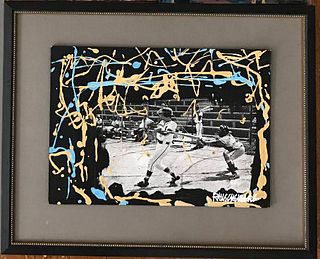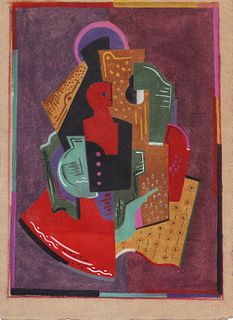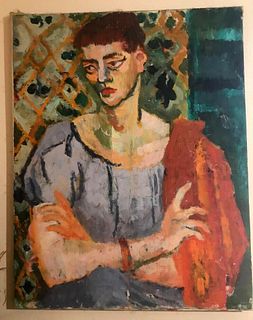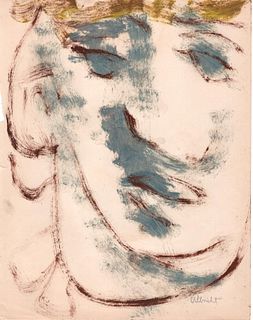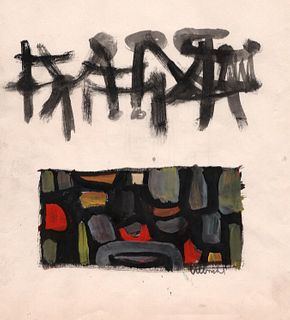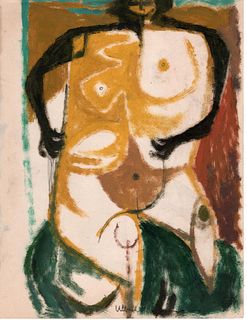attributed to PETER LELY (Dutch/English 1618-1680) A PAINTING, "Portrait of a Lady in Grey with
About Seller
6116 Skyline Drive, Suite 1
Houston, TX 77057
United States
Simpson Galleries has been serving Houston’s need for the very best in antique sales venues for more than fifty years. Beginning in 1962, William Simpson started educating himself and others in the art of collecting fine antiques and art objects. Simpson Galleries' commitment to excellence and accur...Read more
Two ways to bid:
- Leave a max absentee bid and the platform will bid on your behalf up to your maximum bid during the live auction.
- Bid live during the auction and your bids will be submitted real-time to the auctioneer.
Bid Increments
| Price | Bid Increment |
|---|---|
| $0 | $25 |
| $500 | $50 |
| $1,000 | $100 |
| $2,000 | $250 |
| $5,000 | $500 |
| $10,000 | $1,000 |
| $20,000 | $2,500 |
| $50,000 | $5,000 |
| $100,000 | $10,000 |
| $200,000 | $25,000 |
About Auction
May 21, 2022
Including Fine Art, Works on Paper, Asian Antiques, Continental Furniture, European Decorative Arts, Jewelry, Carpets and Rugs, Contemporary Art, and Mid Century Modern Design. Simpson Galleries online_auctions@simpsongalleries.com
- Lot Description
attributed to PETER LELY (Dutch/English 1618-1680) A PAINTING, "Portrait of a Lady in Grey with Pearls and Sapphires, Thought to be Louise de Keroualle, Duchess of Portsmouth," CIRCA 1670, oil on canvas, the lady's irresistible shimmering curls fall at her soft browline as she looks out through piercing almond shaped blue eyes over rosey blushed cheeks and a slight, coy smile; she stands in demure contrapposto backed by an indigo dyed blue cape joined by a gold flower form clasp to a strand of faceted emerald cut blue sapphires interspersed each by two white pearls strung from her shoulder to chest covered by a white color linen underdress that is wrapped with a billowing silvery grey silk robe; 48 3/4" x 39 1/8", framed 57" x 47". Note: Peter Lely (1618-1680), of Germanic heritage with Dutch art school instruction, found success and notable portrait clientele in London. In 1661 he painted for the Restored English monarchy and court. The present sitter is attributed as Louise de Keroualle, Duchess of Portsmouth, a foreign Mistress to Charles II, King of England. The viewer is invited to consider that the sitter's white color underdress was later emphatically enhanced with ruffles and folds to conceal what would have been a defiantly nude breast sometime after the 17th century. Louise's dress style reflects the luxurious couture court lifestyle just before the formalized English Restoration fashion begins, which is characterized by opulent and voluptuous fabrics, despite having subdued cool blue and silvery tones. Indigo was curiously added to Sir Isaac Newton's treatise on the seven basic colors of the visible color spectrum in 1660's, revealing the popularity of the violet blue hue imported by the Dutch East India Company. The hedonistic, romantic fashion of the court of Charles II was bound to shift toward conservative whalebone bodices and severe waists after his reign. Her folded or concealed fingers perhaps suggest his confidence in her. As mistress to the King, the sitter's ability to maintain both courtly and personal relationship with the King of England is subtly suggested in this portrait. Though imitated, the jewelry worn by the sitter is distinct and sets her apart from the other mistresses and ladies of court, with whom Louise's even in her lifetime was often erroneously compared. This particular courtly faux pas highlights the tension between French and English court relations. Her English counterpart, Nell Gwynn, was suggested to retort when mistaken, "Pray good people, be civil, I am the Protestant whore." Louise de Keroualle bore breeding and intelligence, which was obviously valued far beyond just her beauty. If ever there were a lady to keep the company of a king, then it is she. Her final service as a diplomat of the French state to the King of England was receiving him into the Catholic Church on his deathbed.Inpainting throughout over damages, relined, stable. Simpson Galleries strongly encourages in-person inspection of items by the bidder. Statements by Simpson Galleries regarding the condition of objects are for guidance only and should not be relied upon as statements of fact and do not constitute a representation, warranty, or assumption of liability by Simpson Galleries. All lots offered are sold "AS IS.”
Condition
- Shipping Info
-
**SIMPSON GALLERIES, LLC. DOES NOT PROVIDE SHIPPING SERVICES OR SHIPPING QUOTES.** Shipping may be secured through - The UPS Store: owner1656@theupsstore.com 713-781-5651, PACK-N-SEND: sales@pack-n-send.com 713-266-1450, ACTS Crating and Transportation Services: 2BOX@ACTSCRATING.COM 713-869-2269, NAVIS Pack & Ship: 17013tx@gonavis.com 713-352-3038, BGX Couriers: bgxcourier@gmail.com 803-563-7669, or the shipper of your choice. We are open for shipper pick-up Tuesday - Thursdays from 10 am to 3 pm or by appointment.
-
- Buyer's Premium



 EUR
EUR CAD
CAD AUD
AUD GBP
GBP MXN
MXN HKD
HKD CNY
CNY MYR
MYR SEK
SEK SGD
SGD CHF
CHF THB
THB
















